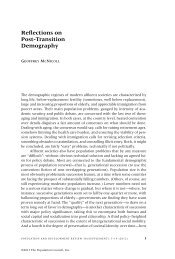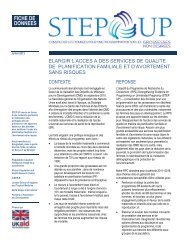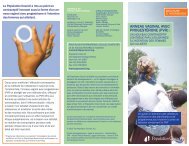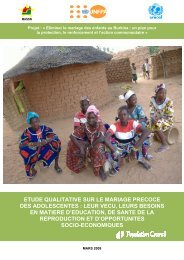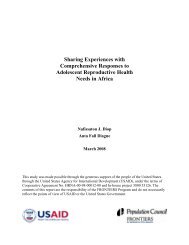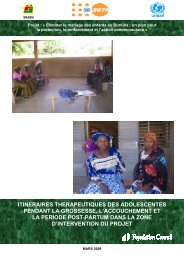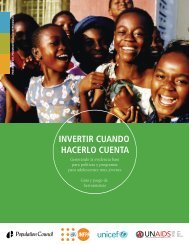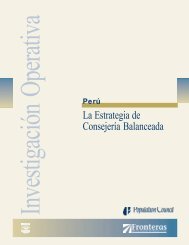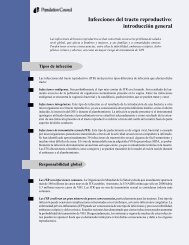Community Health Volunteer's Training Manual - Population Council
Community Health Volunteer's Training Manual - Population Council
Community Health Volunteer's Training Manual - Population Council
You also want an ePaper? Increase the reach of your titles
YUMPU automatically turns print PDFs into web optimized ePapers that Google loves.
Module 2 <strong>Community</strong> Mobilisation and Tools<br />
Unit 4<br />
<strong>Community</strong> participatory tools<br />
126<br />
Introduction<br />
As discussed earlier in Unit 1, various tools are used to collect data in the community. We<br />
also use tools to interpret the data, as well as give us information that helps us understand<br />
what is happening in the community.<br />
In this unit we are going to look at some specific tools or approaches that community members<br />
can use to identify their own health problems/needs and find solutions. There are many<br />
participatory tools, but in this Unit we shall be looking at the Client Oriented Provider Efficient<br />
(COPE®) tool. This tool can be used in many situations, including a market place, office, and the<br />
home. However when it is used in the community, it is called <strong>Community</strong> COPE (C-COPE).<br />
As volunteers you will be involved in using C-COPE. Most of the time it is the <strong>Community</strong><br />
<strong>Health</strong> Officer (CHO) who initiates these exercises, but volunteers should assist the CHOs<br />
to conduct these community based exercises. The health staff only facilitates the process<br />
of using the tool, and after some time leaves the community members to carry on with the<br />
exercises and this is where you play a role. The Village <strong>Health</strong> Committee (VHC) members<br />
also have an active role in these exercises.<br />
Unit Objectives Unit Topics<br />
By the end of this Module the volunteers will be able to:<br />
1. Explain the term ‘<strong>Community</strong> COPE (C-COPE)’<br />
2. State, explain and demonstrate how C-COPE is used<br />
for community health planning<br />
3. Explain the benefits of C-COPE<br />
4. Explain the limitations of the C-COPE tool<br />
5. State the roles of the volunteers in using C-COPE<br />
1. Concept of C-COPE as a participatory tool<br />
2. The C-COPE process<br />
3. Benefits and limitations of C-COPE<br />
4. The role of VHC and CHV in the use of<br />
C-COPE<br />
Key Words:<br />
Client, oriented, provider, efficient-services, feasibility, detrimental, demonstration, limitation<br />
Topic 1 Concept of C-COPE as a participatory tool<br />
Have you ever been involved in collecting information in your community? The process of<br />
being part of that exercise is called participation. C-COPE is one way to allow community<br />
members to participate in identifying their health problems and coming up with solutions<br />
that address the problems using local resources where possible.<br />
C-COPE is an acronym which stands for <strong>Community</strong> Client-Oriented, Provider-Efficient<br />
services. C-COPE is a set of tools used to improve the quality of services provided. It also



